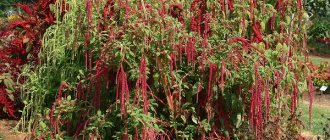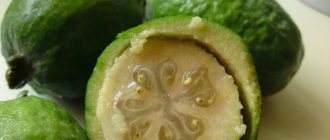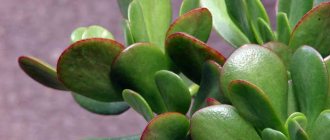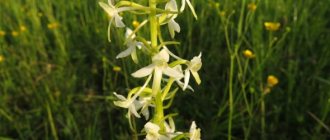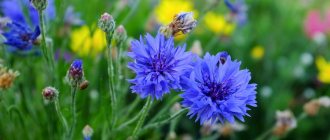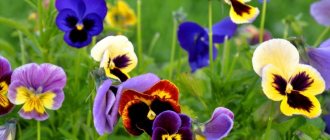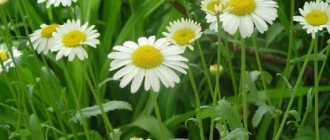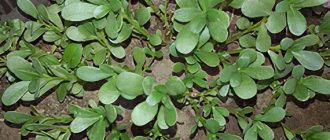Amaranth is a very unpretentious, hardy, undemanding annual flower, distinguished by its sun- and heat-loving nature, and drought resistance. It is able to surprise with its color and shape of flowers, leaves, and even size. In the southern regions, where warm weather sets in early, you can sow the seeds directly into open ground. But in colder regions, it is better to play it safe and first grow amaranth seedlings at home, and then plant them in a permanent place.
Vegetable amaranth: beneficial properties, cultivation, varieties, agricultural technology, recipes
Amaranth has long served as food for the Aztecs and Incas of Central America and Mexico; it was grown in huge quantities.
During excavations in Central Mexico, amaranth seeds were discovered in a cultural layer 4800 years old. But the Spanish colonialists banned its cultivation. The ban was due to the fact that local residents used amaranth flour, as well as corn grains, honey and agave juice to make figures of military gods at the main Aztec festival.
The Spaniards believed that these ritual ceremonies were directed against Christianity. As a result, the culture almost disappeared. It was grown in small quantities for grain in villages in Guatemala and Peru. But after several hundred years of oblivion, amaranth again aroused keen interest. It is not for nothing that this word in Greek means “eternal”, “unfading”. Currently, amaranth is widespread in China, India, the countries of Southeast Asia, Africa, and Europe.
Half of the vegetable protein consumed by the population of these countries comes from amaranth protein. Currently, several types of amaranth are grown, which, depending on their purpose, are divided into vegetables, grains and fodder.
Vegetable amaranth (Amaranthus hypochondriacus) is a powerful annual plant, 1.5-3 m high. The root is taproot, going 90 cm deep. The stem is erect, up to 5 cm thick, highly branched, well leafy. The leaves are alternate, with long petioles, ovate, entire, pointed at the end.
Some varieties of amaranth have red-violet leaves. The inflorescence is a large branched panicle. The seeds are very small, shiny, covered with a hard shell, colored black, light orange, white, or reddish.
Description of the plant
Vegetable amaranth is an annual crop native to America. Initially, it was widely grown as a cereal crop, but during the Inquisition it was called the “devil's plant” and eradicated. Recently, the trend of growing crops for the purpose of grain production or simply to decorate the garden has begun to return. In Russia, the food consumption of such fruits is not popular.
Another useful use of vegetable amaranth is the ability to use it in the form of green manure, that is, green fertilizer.
Depending on the chosen variety, the stem can reach 2-3 meters in height , and its maximum thickness will be 10 centimeters. The leaves are large in size and elliptical in shape and can be colored green, yellow, red, orange or burgundy.
Green vegetable amaranth
Flowering occurs from June until the onset of the first frost . Amaranth inflorescences, colored brownish-red, crimson or purple, consist of many small flowers collected in dense and drooping panicles. In different varieties, the shape of the inflorescences may differ from each other; most often they are spike-shaped and branched, up to 60 centimeters long.
The seeds are small, smooth and glossy . Their colors can be yellow, cream, brown or black. An interesting feature is the fact that such seeds can remain viable for 3-4 years.
Amaranth
Amaranth, or amaranth, is considered one of the most ancient plants cultivated by humans. Its name comes from the Latin word Amaranthus, which means “unfading.” It owes its name to its long flowering cycle, which lasts more than two months. There are annual and perennial species of amaranth. The bushes reach a height of two meters. Its small flowers are red and collected in spike-shaped inflorescences. The leaves are large, oval or elongated, arranged in several rows. The fruits of the flower are presented in a round capsule, each of which contains up to 2000 thousand dark brown seeds.
In Russia, the culture grows in the Caucasus, as well as in some areas of the middle zone. At the moment, 15 species of this plant can be found in the country. Some of them are considered weeds, while others, on the contrary, occupy a place of honor in country gardens. Amaranth was first brought to Russia at the end of the 15th century and was immediately included in the list of harmful weeds. The first plants that could be cultivated appeared a little later. It is worth noting that amaranth is an unpretentious plant. It grows equally well in drought conditions and is not susceptible to frost. If all the necessary conditions are provided, then up to 10 harvests can be harvested per year.
Amaranth, like any grain crop, is harvested at the end of summer. Of course, this applies only to the most common plant varieties. There are also species that need to be collected in winter. The processing of collected raw materials is no different from wheat or barley. At home, the seeds must be manually removed from the boxes. On an industrial scale, harvesting is carried out using a combine.
Flowers and stems are frozen, dried or fermented like regular cabbage. Raw materials are collected only after the end of the flowering cycle, otherwise it will not be mature enough. Frozen parts of the plant are stored for more than a year and do not lose their beneficial properties.
Care
At first, amaranth grows slowly, but as nutrients accumulate, the plant’s development accelerates. It is easier to care for a flower than for other inhabitants of the garden.
Watering
The flower tolerates dry weather well, but still do not forget to water it on particularly hot days. It is better to do this in the evening hours. After the amaranth has grown enough greenery, watering can practically be stopped.
Top dressing
During the season, 3-4 feedings are carried out with special complex fertilizers or a mixture of mullein and ash. When consuming flower leaves as food, do not overuse nitrogen fertilizers.
Weeding and weed removal
Amaranth is a green manure, so weeds practically do not grow around the flower. Occasionally appearing weeds can be pulled out and the bed can be weeded at the same time. Frequent weeding is done during the period of active growth. It will be helpful to mulch the soil around the stem to retain heat and moisture.
Pinching
You can increase the yield of this unique crop by pinching the top. This procedure will stimulate the growth of side shoots and ensure a good harvest.
Recently, amaranth has become very popular all over the world due to its large number of useful properties, versatility in use and unpretentiousness. You can even grow it at home without devoting a lot of effort and time to it. Thanks to its easy care and endurance, the crop will supply gardeners with useful substances for a long time.
What to feed?
In order for amaranth to develop effectively, it is recommended to apply fertilizers to the soil even when planting seeds or seedlings.
About 15 grams are added to the first feeding. superphosphate and 15 g. potassium sulfate per 1 sq. m. Then, every 20 days, organic and mineral fertilizers are applied alternately. To increase fertility and eliminate dryness and weeds, you can mulch the soil with ordinary grass.
The application of chemical fertilizers requires caution, since amaranth absorbs nitrogen, accumulating nitrates: do not exceed the permissible proportions
Landing
Amaranth is an amazing plant that can grow in a variety of soil types, including rocky and sandy soils. When planting a plant, it needs to be provided with living conditions such as plenty of sunlight, warmth and humidity.
The green part of vegetable amaranth ripens in 60-70 days, and the seeds in 110-120 days.
Growing through seedlings
The best time for sowing amaranth seeds for seedlings is considered to be the beginning of April. You can use a commercial mixture for green plants as soil.
The algorithm for growing seedlings is as follows:
- First, the seeds are scattered over the surface of moist soil and covered with a thin layer of the same moist soil;
- Then the box with seeds is covered with film and put away in a warm, dark place. The soil must be watered regularly;
- The first shoots should appear in 7-10 days, after which the plants can be moved to a lighted place;
Amaranth seedlings
- As soon as 1-2 true leaves appear on the seedlings, they can be planted in separate containers and grown in them until the beginning of June;
- Amaranth is transferred to open ground when the threat of return frosts has passed and the soil has warmed up sufficiently.
Sowing seeds directly into open ground
If you plant vegetable amaranth directly in open ground, you must wait until the soil warms up to 6-8 degrees. The seeds are deepened into moist soil to a depth of 1.5-2 centimeters; the distance between plants will depend on the purpose of their cultivation:
- to obtain young greenery, leave a distance of 15-20 centimeters between individual plants and rows;
- if the purpose of cultivation is panicles and seeds, then such distances increase to 50-70 centimeters.
Amaranth seeds should be sown at the rate of 15 grams per 100 square meters
If there are favorable weather conditions and other factors, the first shoots should appear in about a week.
Collecting seeds
To obtain high-quality large grains, the most developed healthy plants are selected. Processing does not require much effort:
- inflorescences with unripe seeds are left in a dark, dry and well-ventilated place to dry for two weeks;
- dried flowers are ground through a fine sieve to get rid of excess debris;
- the resulting final product must be packaged in paper bags.
With proper drying, the shelf life of amaranth seeds will be about five years.
Fodder crop
The high yield of amaranth crops - 5 tons per hectare of useful grain and 200 tons per hectare of biomass - makes this crop an excellent feed source for livestock. From June to October, animals can be fed with green biomass, and the rest of the time - with silage, dry panicles, and granules.
Recent studies have shown that amaranth silage has 1.7 times more protein than corn silage. And when using mixed crops of these crops, the protein level per one feed unit is up to 100 g, which corresponds to zootechnical standards. The use of amaranth silage showed an increase in the average daily weight gain of young cattle by 16%.
In addition, as a forage crop, agarica is of interest due to its low water consumption to create a unit of biomass - 3 times less than alfalfa and beans. Compared to corn, amaranth ensiling requires 2 times less labor.
All these indicators indicate that amaranth is an effective solution to the feed problem and helps to increase livestock production.
Soil quality
At the initial stage of growing amaranth, the quality of the soil is even more important than for adult plants. For good growth, seedlings must be provided with nutrition, moisture, and have access to oxygen to the roots. Before sowing, choose loose, fertile soil with a neutral acidity level. You can purchase “Universal soil” for growing flower seedlings.
The mixture itself consists of the following components:
- lowland peat – 2 parts;
- soil from the garden - 1 part;
- humus – 1 part;
- sand - 1 part.
The soil is first disinfected by steaming it in an oven or microwave. This should be done 2 weeks before sowing, so that in the remaining time the beneficial soil microflora has time to recover.
Medicinal properties, harm and use of culture
The herb, rich in microelements and vitamins, helps with:
- cancerous tumors;
- skin inflammation;
- obesity;
- anemia;
- cystitis;
- gastritis;
- chronic fatigue syndrome;
- hemorrhoids;
- diabetes;
- stomatitis;
- atherosclerosis;
- gynecological diseases.
Contraindications when using amaranth:
- allergies and predisposition to Quincke's edema;
- pancreatitis with frequent relapses;
- severe course of cholelithiasis.
The plant is used in landscape design to create flower beds and mixborders. It combines harmoniously with all colors, but looks most impressive against the backdrop of delicate daisies, luxurious ageratum and nirembergia.
The dried leaves of the plant are steamed to make a tasty and healthy tea. Upturned amaranth is used as silage and feed for domestic animals (especially pigs and poultry). Boiled leaves of the plant are suitable for human consumption.
Properties of amaranth
Amaranth greens and grains have very high medicinal, dietary and nutritional value.
In many countries, amaranth is valued due to its exceptionally high protein content of the highest quality, including almost all essential amino acids.
Amaranth protein contains the same amount of protein as soybean grain, which contains the most important amino acid for humans - lysine. Moreover, amaranth protein is absorbed by the human body better than soy, corn or wheat protein.
Amaranth seeds contain up to 20% protein, and there is a lot of it in green mass.
In terms of protein content, amaranth has the greatest agreement with the theoretically calculated ideal protein, and in terms of the balance of amino acid composition (essential and non-essential amino acids) it is equal to human milk protein. For comparison, let's look at the evaluation coefficient for the ideal protein:
- amaranth – 75,
- cow's milk – 72,
- soybean – 68,
- barley – 62,
- wheat – 60,
- corn – 44,
- peanuts – 32.
Moreover, 100 g of amaranth protein contains 6.2 g of lysine - an essential amino acid that other plants do not have in such quantity. If there is a lack of lysine, food is simply not digested and the protein passes through the body in transit.
In addition to the high protein content, amaranth leaves are the richest source of vitamin C (up to 110 mg per 100 g of leaves), vitamin P (up to 20 mg%), carotene (up to 10 mg%), etc. They contain significant quantities of biogenic forms of silicon, which plays an important role in metabolism and is especially necessary for elderly people.
Nowadays, varieties of vegetable amaranth are becoming more widespread, the leaves of which are especially tasty and healthy.
In terms of the nutrient content in the leaves, the vegetable forms of amaranth are similar to the “king of vegetables” spinach, but significantly exceed it in protein content. The Japanese compare amaranth greens to squid meat.
The unique chemical composition of amaranth determines the limitlessness of its use as a remedy.
UNIQUE AMARANTH
AMARANTH - PHOTO
Amaranth, or amaranth, grows in the garden as a weed for many gardeners, and they treat it accordingly. Actually, amaranth is an annual plant, but actively reproduces by self-sowing. However, the question is different: is it worth getting rid of it?
After all, the plant is very impressive, so it is quite worthy to show off in flower beds (preferably in the background, since its growth is considerable - up to 1.5 m). Amaranth blooms in summer. Its large, long inflorescences sometimes fall all the way to the ground and remain completely decorative until frost. Tip: if you don’t cut it, it will also become a decoration for the winter garden.
Meanwhile, the main value of the plant is not its beauty, but its unique nutritional properties: its vitamin-rich greens are suitable for salads, and flour and butter are made from the seeds. They are rich in nutrients and can form the basis of a healthy diet. Baking from amaranth flour does not spoil the figure and also helps strengthen the body's defenses.
Amaranth is an excellent source of calcium, iron, magnesium, phosphorus and potassium, and also contains vitamin C and a large amount of protein. There is so much of it in the seeds of some varieties that the product can compete with chicken meat. In recent years, scientists have been closely studying amaranth and found that when eaten, it reduces the level of “bad” cholesterol and, in addition, does not contain gluten. In 2008, scientists from Mexico also discovered the peptide lunasin, which has anti-cancer properties, in the seeds.
Amaranth oil is obtained by cold pressing, which means that all the beneficial substances are preserved as much as possible. This life-giving substance is of particular value for cosmetology.
The oil helps mature skin maintain youth and effectively fights skin diseases, such as dermatitis, eczema, psoriasis or poorly healing ulcers. It is recommended to take a few tablespoons of oil inside every day for diseases of the cardiovascular and nervous systems, anemia and decreased immunity. It is also successfully used in radiation therapy. By the way, the oil has a pleasant smell and nutty taste, so it does not cause disgust. However, if you have problems with the gastrointestinal tract in the acute stage, you should refrain from taking the oil.
Growing amaranth is simple: in early May, sow it in a sunny place with fertilized soil, and then the plant will take care of itself. Collect seeds in the fall. To do this, carefully cut off the inflorescences on the eve of ripening (this happens unevenly, so some of the seeds may fall off if you delay collection) and dry the extracted “seeds” in a well-ventilated area.
Amaranth oil is used in cooking, cosmetology and as a medicine.
It is consumed internally and used externally.
Amaranth seed flour is high in calories (465 kcal per 100 g), but the basis of the fat, which is only 3.6 g, is healthy fatty acids.
DIY amaranth bread
200 g amaranth flour,
400 g wheat flour, 350 ml water,
15 g yeast, 1 tbsp. spoon of sugar, pinch of salt, 25 g olive oil
- Dissolve the yeast with sugar, 1/3 of the wheat flour and half of the water (room temperature). Leave the mixture warm for about 10-15 minutes for the yeast to start working.
- Add the remaining wheat flour, amaranth flour and knead the dough, adding the remaining water in small portions (knead for 10-15 minutes).
At the very end add oil and salt. 3. Lightly dust the mixture with flour and leave it alone for about 2 hours until the dough has at least doubled in volume. 4. Cover a baking sheet with parchment. Roll out two loaves of bread and let them rise for another 40 minutes. 5. Preheat the oven to 200° and place the buns in it for about 20-25 minutes.
Growing vegetable amaranth
The Internet is replete with articles about the exceptional benefits of amaranth. They say that the vegetable crop of the twenty-first century, which is superior to milk in protein content, can feed the whole world, prolong people’s youth and help improve the health of the body. And with all its many advantages in growing, amaranth is unpretentious and undemanding.
Amaranth is a light-loving, heat-loving plant and responsive to watering. It grows in almost all types of soils, including sandy, rocky and saline soils. The ripening period for greens is 60-70 days, seeds - 100-120 days.
Amaranth is an excellent green manure and green manure. Therefore, you should tear off the leaves, stems and tops for food, leaving the roots in the ground. The summer resident receives a vitamin salad, and soil microorganisms receive the necessary organic matter. And everyone is fine!
Growing amaranth through seedlings
Amaranth seeds are planted for seedlings in late March - early April. First, the seeds are sown in a common box and sprinkled with moist soil. Then cover with film and send to a dark, warm place. After 7-12 days, shoots appear, then the box is moved to the windowsill.
After the threat of frost has passed (late May or early June), the seedlings are planted in a permanent location.
Growing amaranth by direct sowing
Seeds are planted one at a time in moist soil. They can be sown in late April-early May, when the soil has warmed up to +6°C.
Any distance between bushes and rows is allowed and depends on the immediate purpose of cultivation. If you need powerful plants, with a large number of panicles and seeds, use a 70x30 cm pattern. If preference is given to delicate greenery, then you can thicken the plantings and use a 15x15 cm pattern.
For those who decide to plant a large area with amaranth, it will be more convenient to mix the seeds with sand, ash or sawdust in a ratio of 1:20, sow in rows, and then thin out. You shouldn’t bury the seeds too deep; just sprinkle them with a 1-2 centimeter layer of soil and roll them a little for better contact with the ground.
Amaranth requires care only in the first month of growth. At this time, its ground part grows so slowly that it is difficult to believe that these blades of grass will soon turn into powerful tall bushes. Therefore, you need to periodically weed the bed, mulch with mowed grass to prevent drying out, and if desired, you can feed it with an infusion of mullein and ash (or liquid grass fertilizer).
Starting from the second month, amaranth begins to grow rapidly and adds 5-7 centimeters per day. Now he himself is able to choke out any weed, and all he needs from the gardener is regular watering.
There are a great many varieties and varieties of amaranth. Vegetable, grain, fodder, ornamental... As gardeners, we are primarily interested in universal varieties (which are grown for both greens and grain), leaf and grain varieties.
Sturdy. An early ripening vegetable variety, grown for fresh greens. The leaves are green, juicy and tender, the flowers are brown with red spots. The seeds are light yellow. It reaches a height of 1.3-1.4 meters. The growing season is 70-80 days.
White sheet (White Leaf). A dwarf vegetable variety, grown for greens. It is cut off when it reaches a height of 18-20 centimeters. The leaves and stems are light green, very tender and tasty. This variety can be grown on a windowsill in winter.
Kharkovsky-1. A universal variety, one of the best for growing for grain. The leaves are green, the inflorescences are erect yellow, the seeds are light. It reaches a height of 1.7-1.9 meters. The growing season is 90-110 days.
Voronezh. Early ripening grain variety. The leaves are green, the panicle is long, erect, yellow-green, the seeds are light. The average plant height is 0.8-1.2 meters. Grain ripening time is 90-100 days.
Kizlyarets. It is considered a forage variety that can be grown for grain. The leaf is large, light green. The inflorescence is a straight panicle of yellow-green color, turning red when ripe. The seeds are round, light yellow. Plants reach 1.2-1.6 meters in height. Grain ripening time is 80-120 days.
Remember that in vegetable and grain varieties of amaranth, the color of the seeds should be light. If the seeds are dark, it is an ornamental amaranth, which is grown for its beautiful bright panicles. It is not recommended to eat the grain of such plants, but the leaves can be added to summer salads in any case.
We recommend reading:
What you need to know when growing ashiritsa
You already know what amaranth is, now it’s time to find out how to grow it correctly.
The most important thing is that you should remember that ashiritsa is quite demanding on the soil composition.
- The first thing you need to make sure is that the soil has warmed up to 6 degrees to a depth of about 45 cm.
- You should also remember that the newly emerged plant needs regular watering.
- Getting rid of weeds is a good idea.
That is why seedlings should be sown before cold days come outside, which will allow the sprouts to emerge earlier than the weeds and you will not have to weed the beds. If you are interested in the question: where does amaranth grow in Russia, then you should know that this is an unpretentious flower and you can find it in any city. In the northern regions, before planting, you need to prepare a greenhouse where flowering shrubs will grow.
During the growing season there is practically no need to care for the bush. If you planted it correctly, following the rules, you will soon be able to enjoy lush flowering. After sowing, the seedlings take a long time to sprout, so growing cockscomb is practiced using seedlings or sowing seeds in the soil in the autumn.
How to sow seeds correctly
Growing amaranth from seeds requires following some rules that will help you get healthy seedlings in the future.
For sowing, you can use universal soil sold in stores, or you can make it yourself.
To do this, take in equal shares (1:1:1)
- humus
- sod land
Mix everything well.
As a result, you will get loose, moisture-retaining soil. Boiling water or a solution of potassium permanganate will help you get rid of possible pathogenic microflora.
If you will grow ashiritsa in cold regions, then this matter should be done in the first half of February. Since the days are short in winter, you will need additional lighting for future seedlings.
Sequential steps for properly sowing acorn seeds for seedlings:
- You will need boxes that are about 10 cm high.
- Fill them with the moistened mixture and deepen the seedlings into it by about 0.5 cm.
- Be sure to use a sprayer, spray the seeds and cover them with polyethylene or glass.
- The air temperature should not drop below +22 degrees.
- With proper planting and care, sprouts will appear after about five days. From now on, move the boxes to a well-lit place and remove the glass.
- Be sure to water the seedlings regularly and remove excess seedlings if they are located close to each other.
Advice! In order for the roots to grow stronger, it is necessary to pinch the tops of the seedlings. Transplanting them will also help speed up this process.
After the air outside warms up to +4 degrees and does not fall below this mark, then young smooth pigweed should be planted in an open flower garden.
History of amaranth cultivation
There are few plants with such an ancient and dramatic history of cultivation as amaranth.
8 thousand years ago, the indigenous population of South America began to cultivate caudate amaranth; it was the second most important grain crop (after corn) before the arrival of Europeans. For many centuries and millennia, amaranth products were part of the diet of the Aztecs and Incas. The ancient Aztecs used amaranth to feed newborn children; warriors took its grains with them on difficult campaigns as a source of strength and health. Moreover, the Aztecs and Incas revered amaranth not only as a food crop, but also as a sacred and medicinal crop. Holidays were held in honor of amaranth. There was a cult of amaranth, which even involved making human sacrifices.
The Spanish conquerors decided that by destroying amaranth, an integral attribute of these cruel rituals, they would be able to put an end to the inhumane tradition of sacrificing living people to the gods.
Any use of amaranth, cultivation, or storage of its processed products was strictly prohibited. Thus, the most unique and valuable plant, which today scientists call nothing more than a “product of the 21st century,” was forgotten in its historical homeland for many centuries. Its cultivation continued only in small areas in the most inaccessible areas of Mexico and in the Andes.
In Asia, amaranth is popular among the hill tribes of India, Pakistan, China and Nepal as a grain and vegetable crop.
Amaranth caudate is most widespread in the mountainous regions of India and Nepal, where its grains, soaked in milk, prepared like puffed corn, were the only allowed food on special holidays.
Moreover, the residents of these areas are sure that ramadana amaranth (a grain sent by God) is a purely local plant.
The same Spaniards brought amaranth seeds to Europe, where they first began to grow it as an ornamental plant, and from the 18th century it was already cultivated as a fodder and cereal crop. It became so popular that the Swedish Queen Christina Augusta even founded the Order of the Knights of Amaranth in 1653.
The plant came to Russia two or three centuries later. Now in Russia there are 15 species of amaranth growing, the most common being amaranth, or common amaranth (Amaranthus retroflexus), which grows freely in nature and is known as one of the best forage crops, on the one hand, and as a malicious weed, on the other. Other names for this plant are cockscombs, velvet, axamite, cat's tail, beetroot. Thanks to its unpretentiousness, as well as its wide distribution in the wild almost throughout Russia, amaranth quickly gained popularity among livestock breeders. Its seeds contained more protein than rye, wheat, corn and buckwheat. The addition of amaranth to the diets of domestic animals has a stimulating effect on the processes of protein metabolism. Amaranth grain is a valuable feed for poultry.

